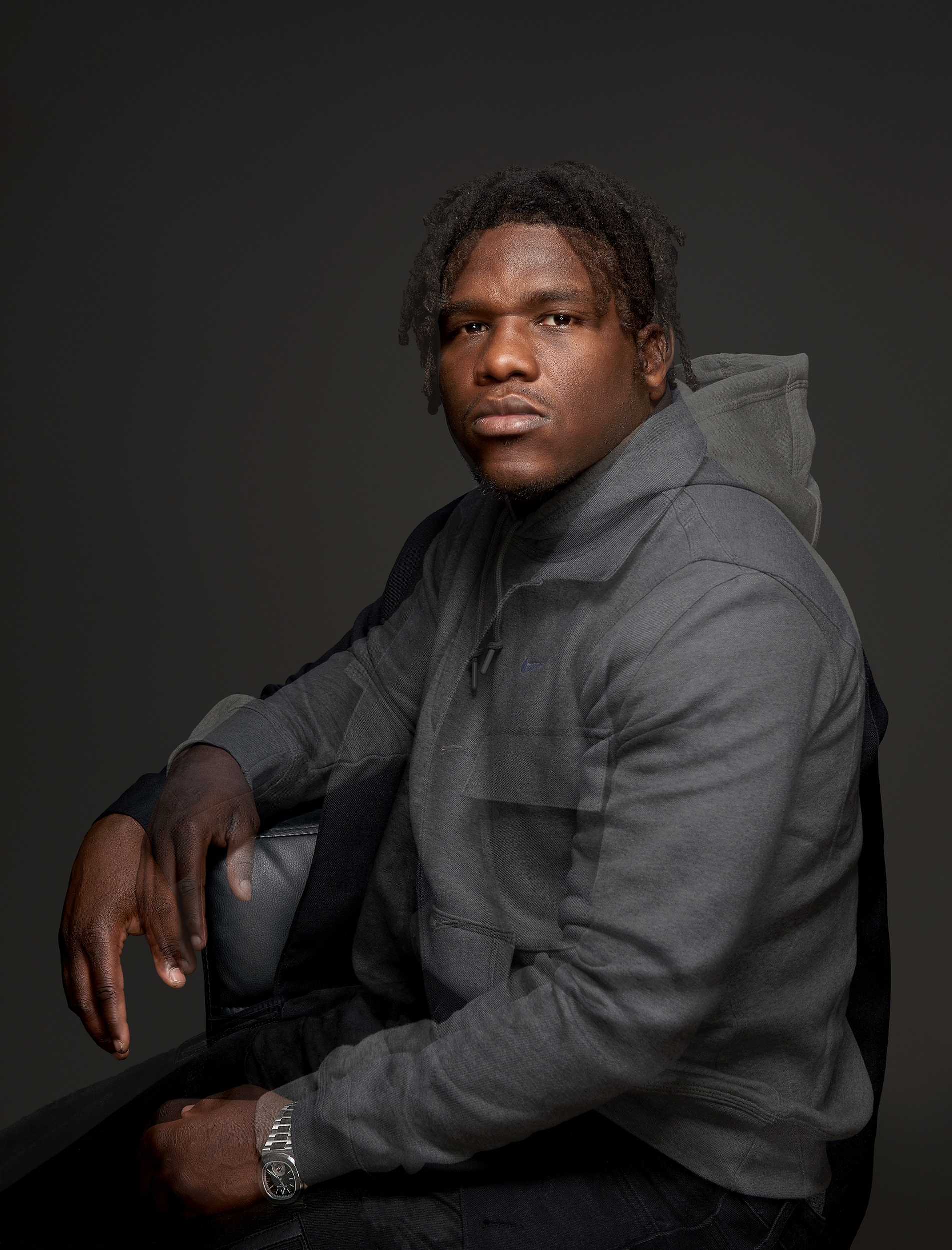
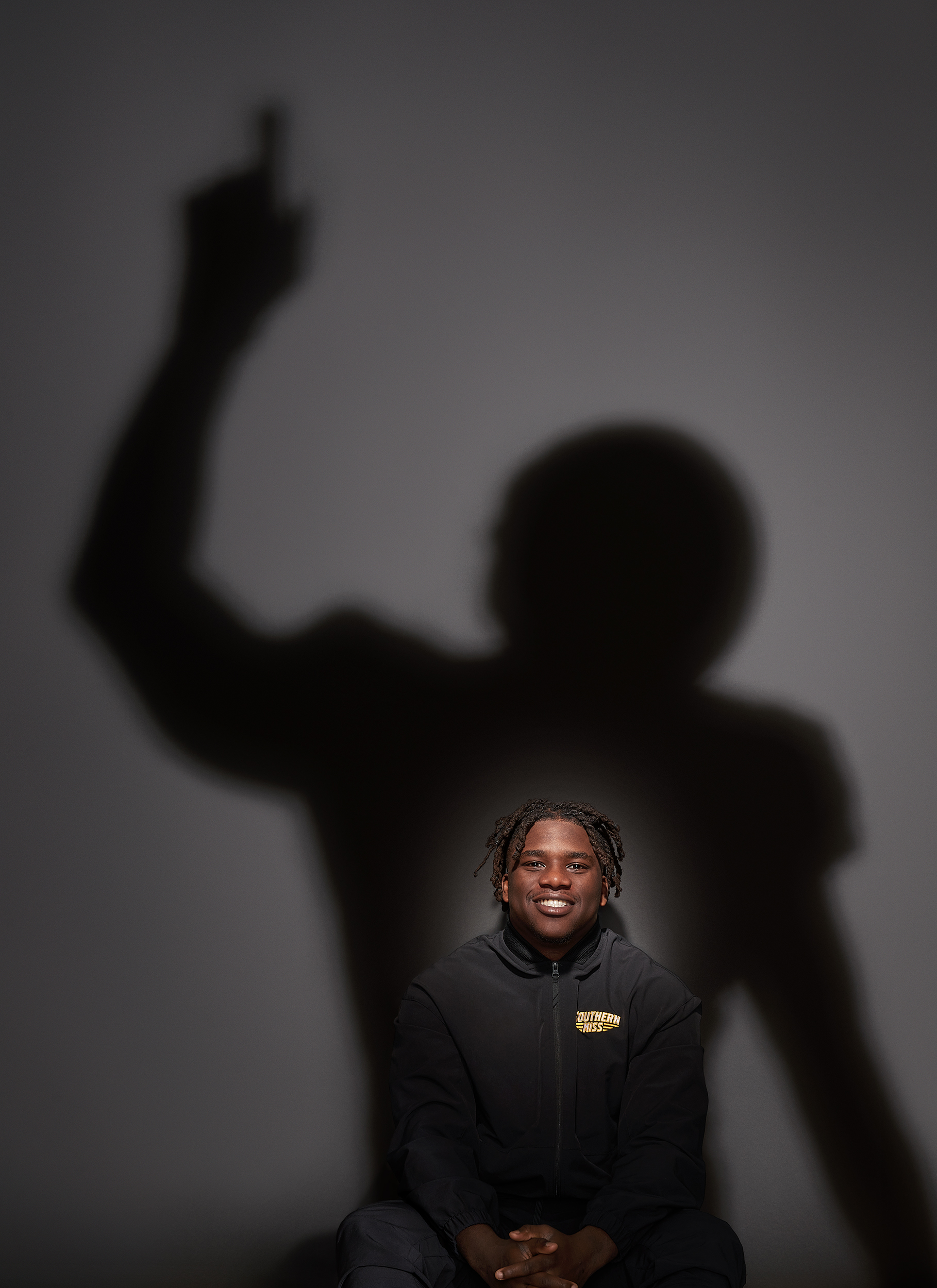
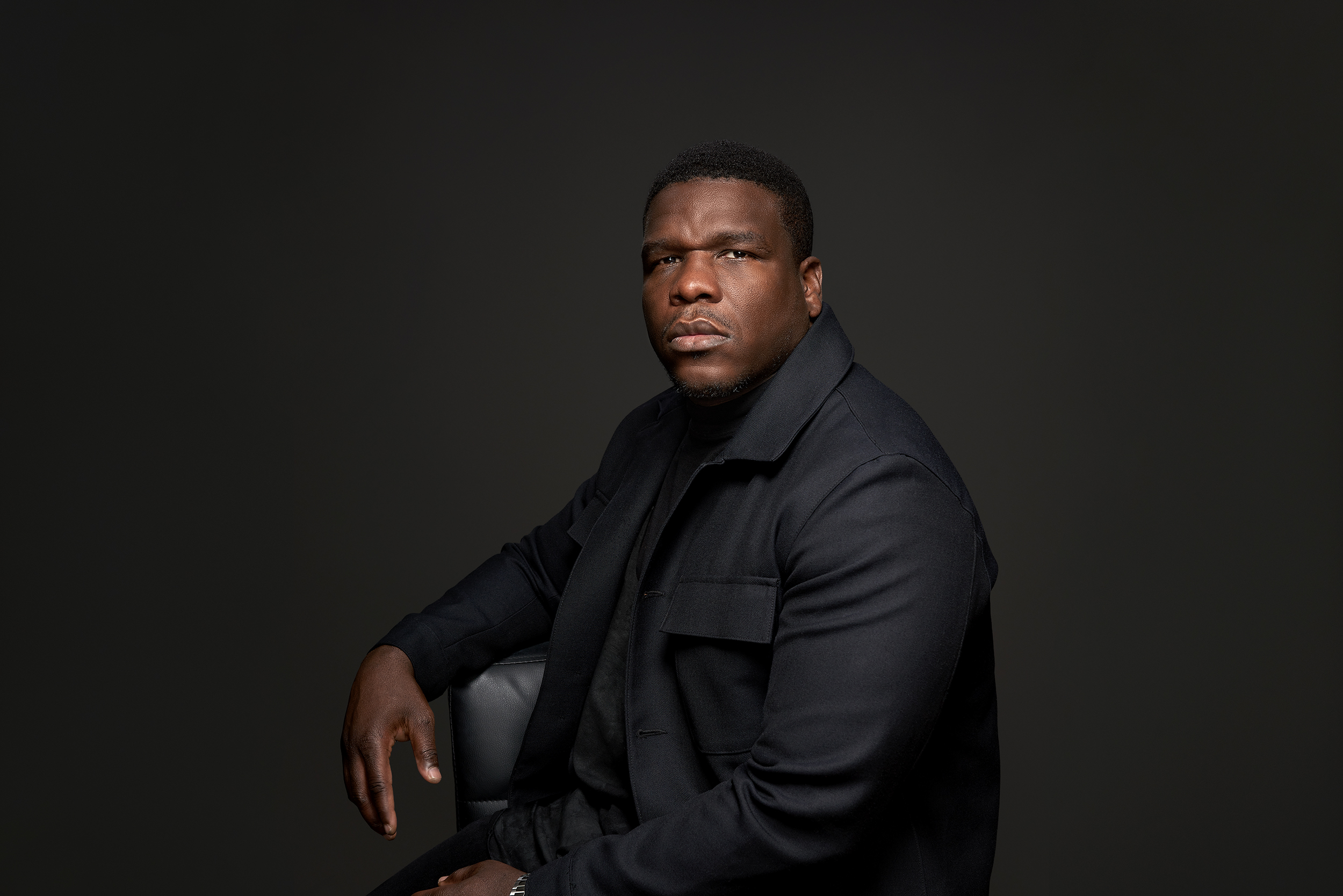

ESPN
Photographer: Hugh Kretschmer
Photo Editors: Kaitlin A. Marron and Robert H. Booth
Heidi: How did this moving portrait series idea come about?
Hugh: The idea for the portrait series originated while I was capturing moments of a longtime friend and her daughter as a special gift. Although we explored various concepts that day, the “layering” concept held the utmost significance for me. Initially, I had planned to craft a unique artwork by creating a combined portrait through a practical collage. My original idea involved producing large prints of their individual portraits, cutting them into strips, and intricately weaving them together.
However, a pivotal moment shifted my approach away from collage. While shooting tethered and utilizing the overlay feature in Capture One, I was captivated by the results when aligning two captures and adjusting the opacity of the overlaid image to 50%. By reducing the opacity of the overlaid image by 50%, a hybrid of both subjects emerged – a Third Person – becoming the namesake of the entire project.
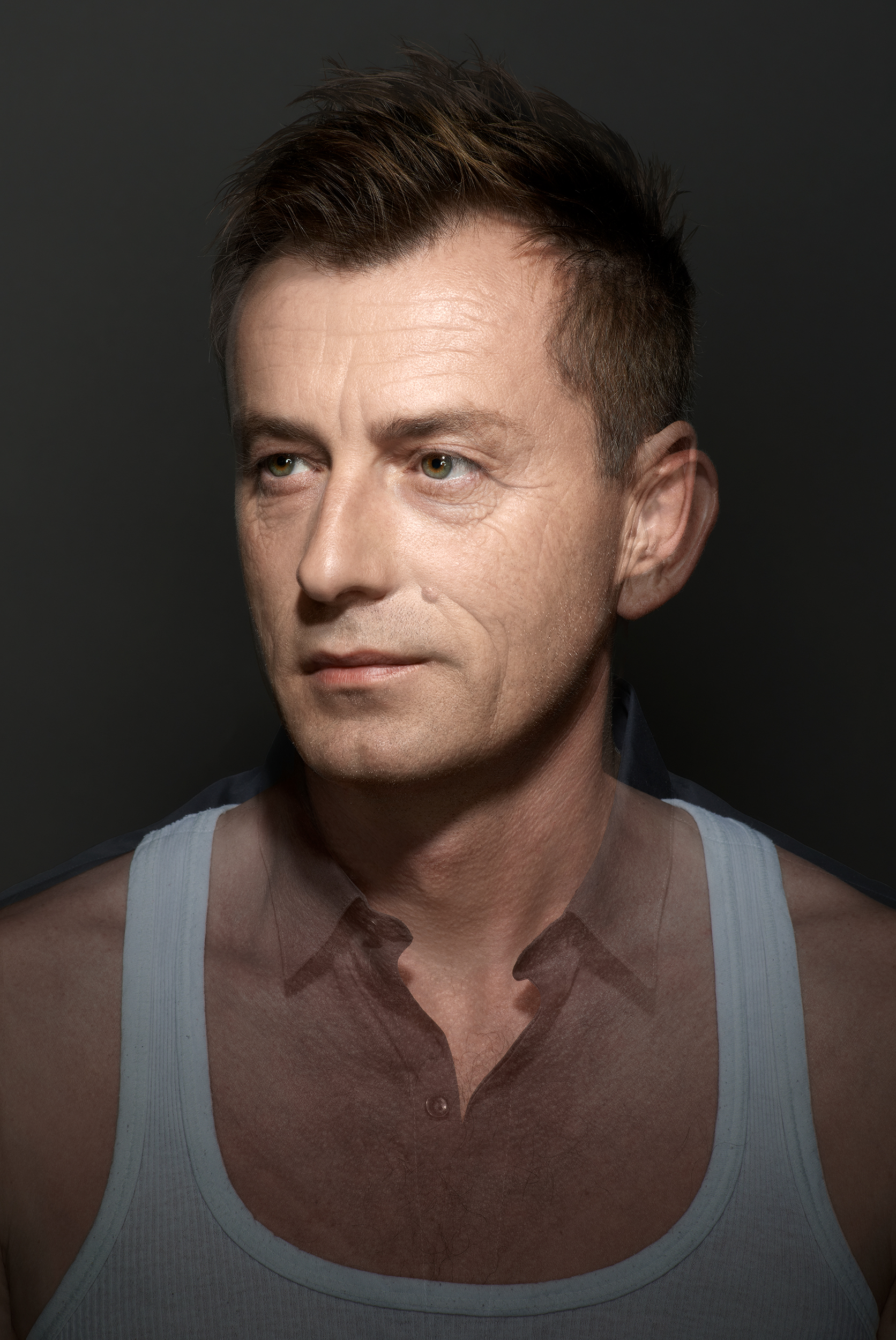
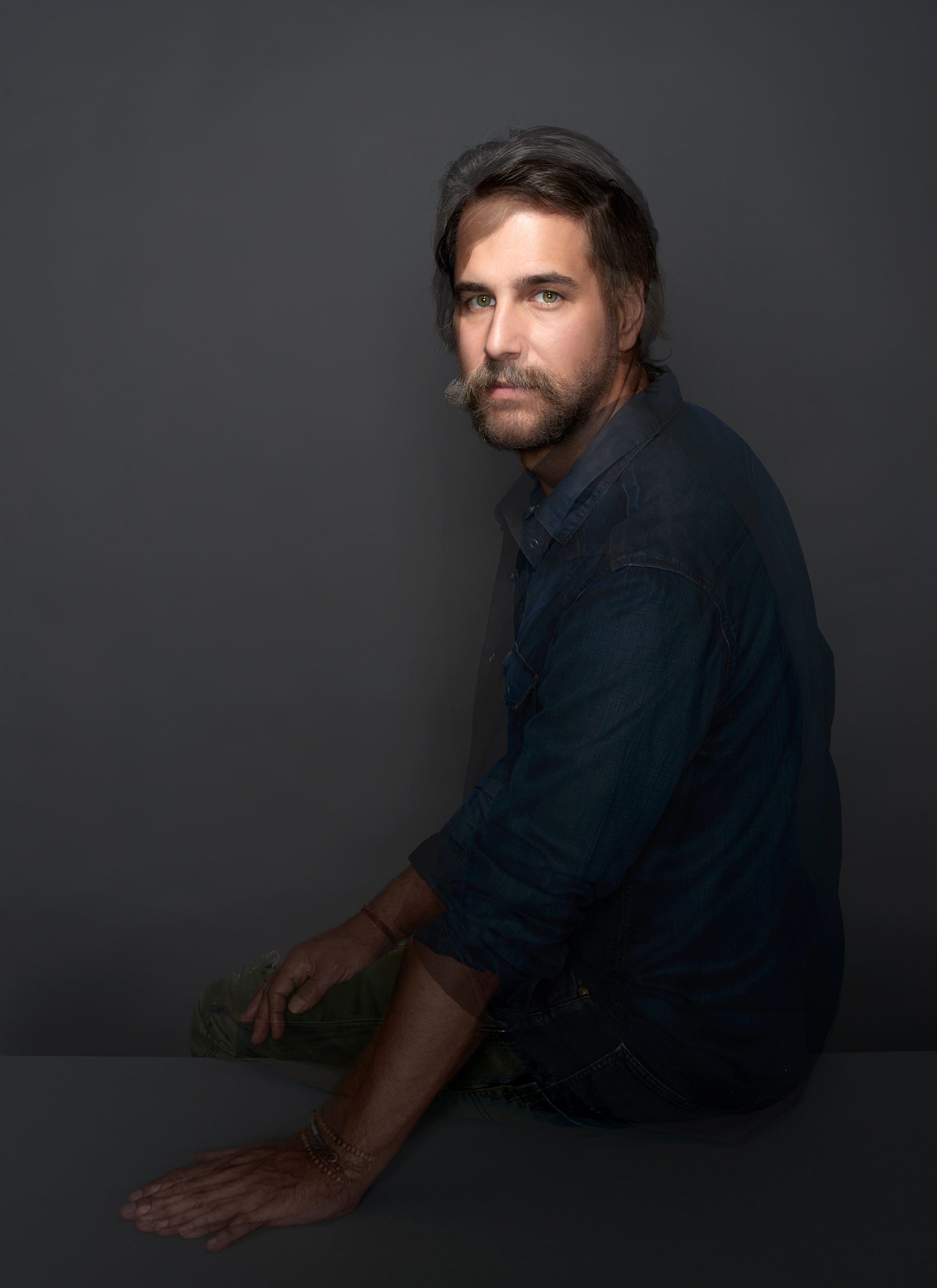


Has generational transmission of knowledge, passing down stories, and cultural identity helped inform this idea?
No, I comprehend the direction of your question. This project is solely a visual exploration of genetics. I lack a deep familiarity with most of my subjects, preventing me from incorporating elements that authentically convey their stories. The nuances of their gestures, expressions, or body language may serve as the only components beyond facial features that could contribute to a more intricate narrative.
Nevertheless, the initial commission took a different approach, delving into the family’s history and Frank Senior’s remarkable NFL career before progressing to Junior, who is following in his father’s footsteps. I empathize with Junior and the potential challenges he might encounter in living up to his father’s success.
It resonates with my own experience when I chose to pursue a career in photography, following in my father’s footsteps and facing the pressure to meet a set of expectations, largely my own.
Is this series a response to the layered narratives available in both double exposure and moving images?
Absolutely! I’m incorporating more motion into my work because I find it enjoyable and stimulating. It’s a fun challenge that allows me to expand my problem-solving skills, and this project is a continuation of that exploration. While motion is always a consideration during a shoot, I typically don’t start with a storyboard. Instead, I keep an eye open for opportunities as they arise during the session and proceed from there.
I strive to align the chosen technique with the narrative and vice versa. For instance, the double exposure effect in this series aligns perfectly with the theme of genetics, which is why I used it to depict a family’s heritage through these “double” portraits.
The ideal moment for incorporating motion occurred while photographing Frank Senior, first in his graduation gown and then in his everyday attire. I was struck by how consistently Frank Senior maintained his expression throughout. Remarkably, I found one frame in each set that matched so precisely that there was no discernible change in his expression or head position when I merged the images.
Your parents were fluent but polar opposite creatives; looking back, how has that influenced your work?
My father served as a photo-instrumentation engineer for NASA, imparting to me both photography skills and the art of problem-solving. On the other hand, my mother, who had an artistic influence on the family, acquainted me with 20th-century art movements.
Even after their passing, they remain significant influences on my early work, albeit indirectly. I can still hear my father saying that every problem has a solution, no matter how complex or insurmountable. Under pressure, he would often share a favorite piece of advice: “Getting a man on the moon was just an idea at first.” (It occurred to me much later in life that he might not have known the answer to my question and offered those “words of wisdom” to avoid any embarrassment.)
In contrast, my mother took a gentler approach to my countless questions, sitting with me and delving into every detail of a subject I inquired about. She would retrieve museum catalogs or art history books from her library, opening them up to explain the composition, color choices, and techniques employed by artists to bring elements together uniquely. Thanks to her, my work consistently reflects the art movements she introduced me to, an influence that persists to this day.
ESPN retired its print issue. How has this digital-only context opened up ideas for you creatively?
Certainly, they retired their print issue, and honestly, that’s a disappointment for me. I have an affinity for the printed page and miss the tactile qualities of a finely printed magazine. However, the transition to digital has brought about both opportunities and a few challenges.
Given that ESPN is predominantly viewed on phones now, the magazine requested versions of specific images to be cropped in different aspect ratios, particularly extreme horizontal formats. This information before the shoot allowed us to plan and capture backplates in vertical and horizontal orientations to meet their requirements.
One notable advantage of digital magazines is the ability to incorporate motion. While not specifically requested for this assignment, I volunteered it as an option. (I’m not sure if they used the motion in the issue, but it provided an opportunity for me to showcase the possibilities to the photo editors.)
Tell us about the creative process for the portrait of NFL Running back Frank Gore and his oldest son, Frank Gore JR. (is there any crossover with you, living up to a parent’s identity?
Your question is indeed intriguing and resonates with me, as Junior and I share a similar experience. Like Junior, I chose to walk in my father’s footsteps by pursuing photography. However, the stakes seem higher for Frank Junior, considering his father’s immense success and stature. Additionally, his journey mirrors his father’s even more closely, given that he’s playing the same position.
My path diverged somewhat from my father’s. While he was involved in scientific photography at NASA, I ventured into the commercial side of photography. Nevertheless, I, too, grappled with the challenge of meeting his expectations. That’s where our paths differ. Frank Gore Jr. might be striving to uphold his father’s legacy, whereas I was, in a way, seeking my father’s approval.
What were the obstacles of the project, if any, and how did you problem-solve?
The primary challenge we encountered was the exceptionally low ceiling in the hotel conference room where our photo shoot took place. This limitation meant we couldn’t capture the Gores in a standing position, leaving us with no option but to photograph them while seated. To address this, we improvised by using a makeup chair we found in an adjacent room. Surprisingly, this turned out to be a blessing in disguise. The chair served as a stable anchor, simplifying the alignment of my subjects and facilitating the registration of their facial features during post-production.
Despite this initial hurdle, the remainder of the shoot proceeded seamlessly. We successfully captured all the necessary elements for the nine deliverables within the allocated two-hour time frame.